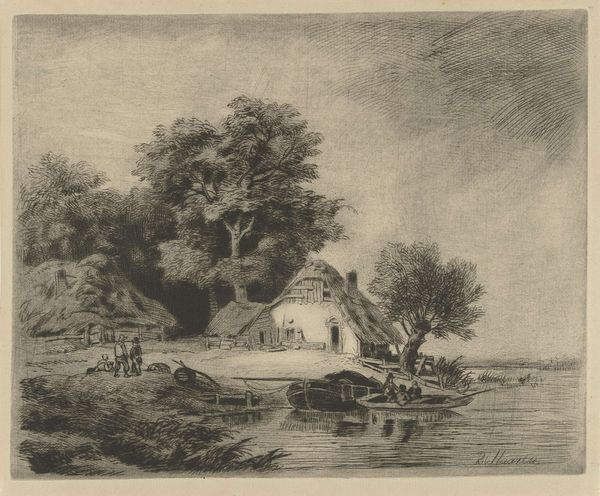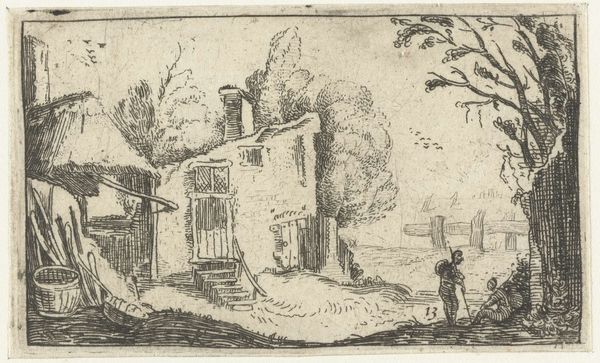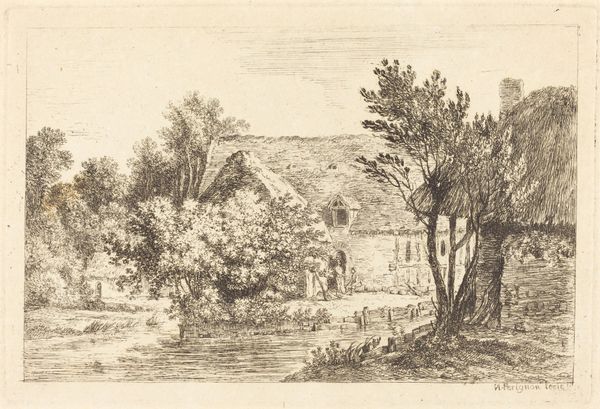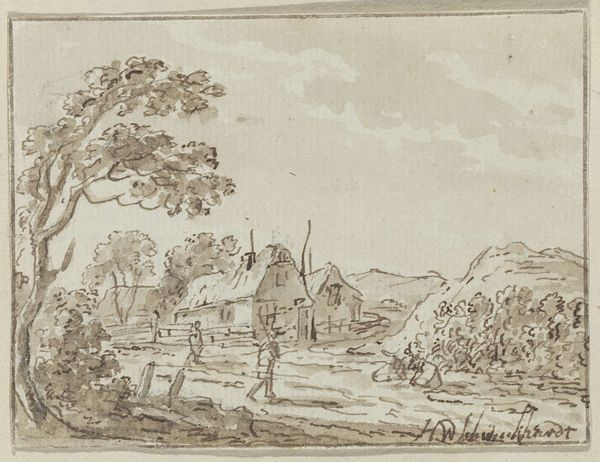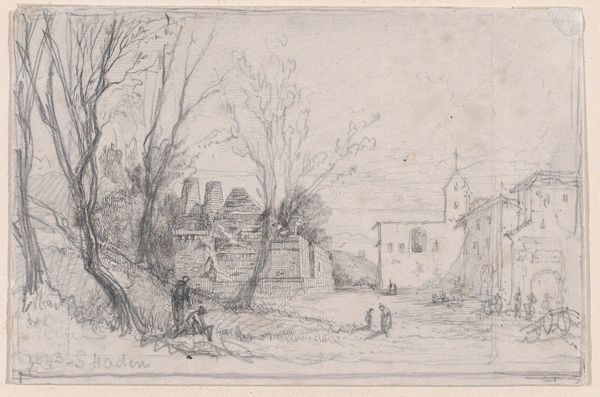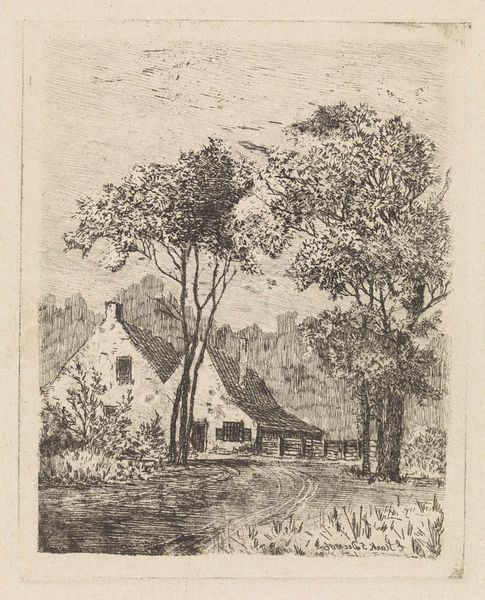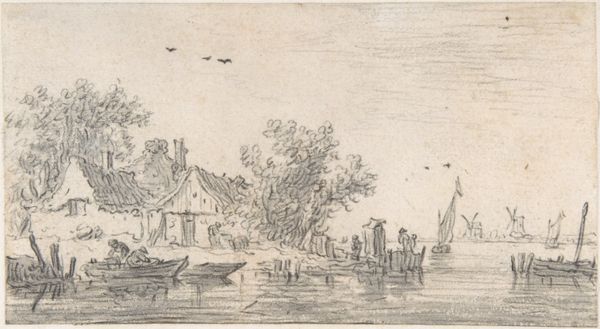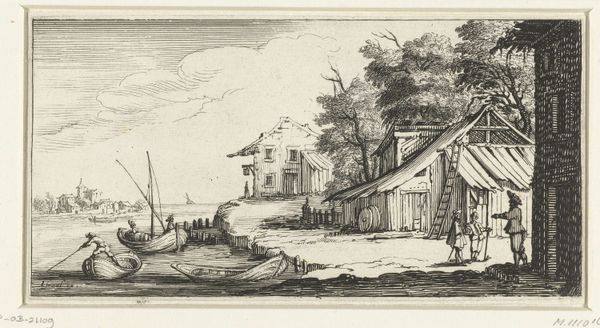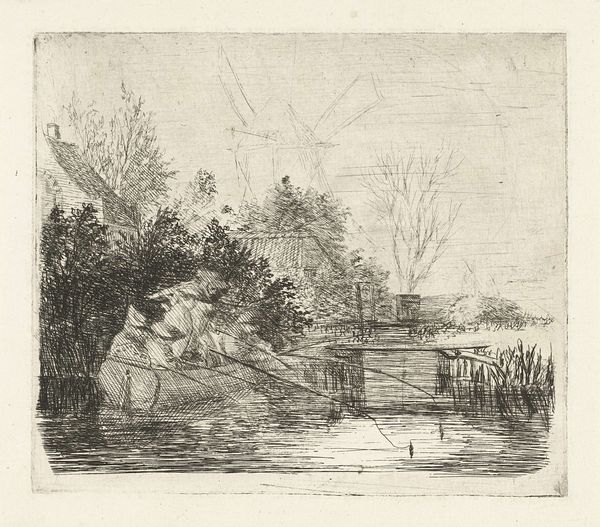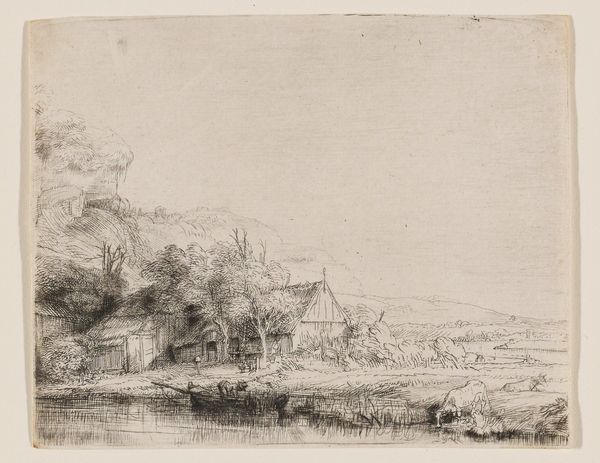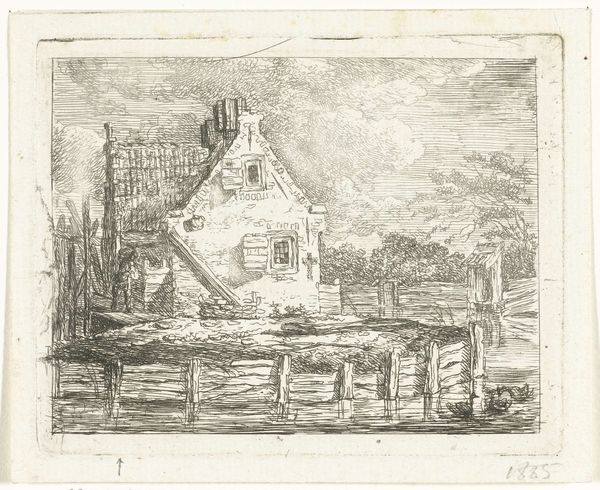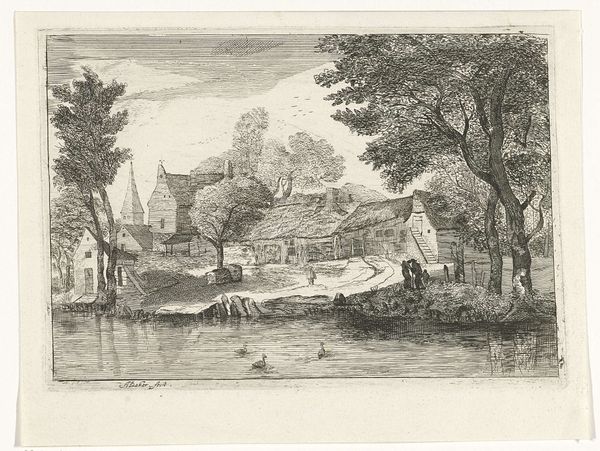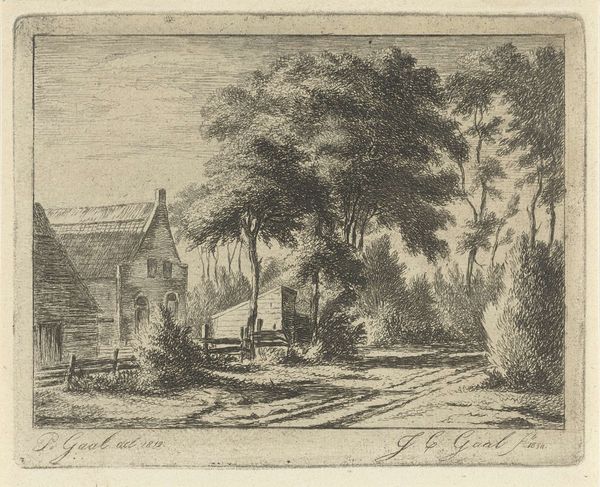
Landschap met twee figuren in een boot voor een boerderij 1799 - 1874
0:00
0:00
hendrikjozeffranciscusvanderpoorten
Rijksmuseum
drawing, pencil
#
drawing
#
landscape
#
coloured pencil
#
romanticism
#
pencil
#
genre-painting
#
pencil art
#
watercolor
Dimensions: height 47 mm, width 70 mm
Copyright: Rijks Museum: Open Domain
Curator: Before us is "Landschap met twee figuren in een boot voor een boerderij," or "Landscape with Two Figures in a Boat near a Farm," attributed to Hendrik Jozef Franciscus van der Poorten and created sometime between 1799 and 1874. It’s currently part of the Rijksmuseum collection. Editor: It has a wistful feel to it. The soft pencils, possibly with watercolor washes, lend the scene a sort of faded dreamlike quality, a peaceful melancholia, even. Curator: Yes, it perfectly encapsulates the Romantic era’s fascination with nature and the past. The rural scene—a small farmhouse, a waterway with figures in a boat, a stone bridge—idealizes country life and simple existence, echoing broader social desires. Editor: Note the use of pencil and what appears to be watercolor, especially the textural build-up on the trees and cottage. It hints at an interesting studio practice—van der Poorten appears interested in different ways of approaching landscape in accessible materials, inviting viewers to question the hierarchies between drawing and painting. Curator: Interesting observation. This piece fits within the tradition of Dutch landscape art, focusing on the idyllic. These images became commodities, reflecting both cultural values and, naturally, economic exchanges. The depicted scene wasn't just "nature"; it was carefully composed imagery that told a very specific story. Editor: The subject matter and delicate handling makes me curious about the labor behind it, considering the probable audience for such an image at the time. Where was it produced? Were assistants involved in preparatory or final touches? What materials would be considered acceptable? It also raises questions about how 'authentic' or true the scene may appear considering the historical and cultural setting. Curator: These are excellent considerations; such idyllic depictions frequently obscured harsh realities of agrarian life. The art market consumed these images, often disconnected from those very realities. They offer insights into what society valued—or, rather, what it aspired to value. Editor: Exactly, the materiality is deceptively simple, belying these embedded social dynamics and class tensions within the apparent peace. Thank you; viewing this drawing together revealed many more layers. Curator: Likewise, focusing on both the aesthetic choices and cultural framing makes us see beyond the charming facade and engage with complex historical contexts.
Comments
No comments
Be the first to comment and join the conversation on the ultimate creative platform.
